The Lion of Hwa Rang Do® ROARS!
An Exclusive Interview with Founder, Lee Joo-Bang
Part 2 by Hyung Min Jung
(Black Belt Magazine - October, 2000)
In part one of this article, which appeared in the September 2000 issue of Black Belt, Lee Joo-Bang discussed the origins of the Korean martial arts and the relationship those ancient combat styles have with his own art Hwa Rang Do. In part two, he expands the scope of his historical discourse to include the development of taekwondo and hapkido. -Editor
Black Belt: The Yi dynasty ended in 1910; and from 1910 to 1945, the Japanese occupied Korea. What happened to the Korean martial arts during that time?
Joo Bang Lee: That time was disastrous for Korea in all respects, not just the martial arts. All respects of our culture were subjected to a "revision" process. The Japanese forced Koreans to speak Japanese in public, dress in the Japanese manner and act Japanese in almost every way. We were forced to conduct ourselves as Japanese, yet [we were] treated as less than human. Anything that followed Korean tradition was banned. Traditional Korean dress, Korean speech, Korean writing, Korean martial arts and even our Korean names were outlawed. The Japanese murdered hundreds of thousands of innocent Korean civilians, kidnapped and raped our women, attempted to rewrite Korean history [to] portray us as inferior to the Japanese and tried to destroy our identity by pressing us into lives of servitude.
BB: How did that effect the practice of the Korean arts?
Lee: Needless to say, anyone caught practicing or teaching traditional Korean combat skills was put in jail. Those combat skills were already in decline during the later years of the Yi dynasty because of King Taejong's decree, but the Japanese occupation almost completely destroyed what little remained. Those who chose to publicly practice were forced to learn and teach Japanese martial arts, such as karate, judo or kendo. Luckily, some masters maintained their practice in secret, either training in private or living in such remote parts of Korea that the Japanese did not come into contact with them. That was the case with some Hwarang descendants who lived in the hills.
BB: Let's sidetrack for a moment and talk about your early martial arts training.
Lee: My earliest martial training began with my father, who studied judo and kendo under the occupation. That started as soon as [my brother and I] were old enough to walk. My most important training began a bit later with a monk who was a descendant of a particular Hwarang lineage. He was a dosa, which means "master of the way". The Chinese use it to signify a Taoist master, but the Korean use it to refer to a wandering hermit-monk who is learned in Korea's three major religions: Buddhism, Taoism and Confucianism Su-Ahm Dosa, my master, was the 57th-generation heir to one particular lineage of Hwarang training handed down from the Silla period. The martial section of his teachings were called um-yang kwon. It consisted of hard and soft techniques, including kicking, punching, joint manipulation, throws, acrobatics, grappling, ki (internal energy) development and a wide assortment of weapons. Just before the end of World War II, my father brought my brother and me to Sukwang Temple near where we lived in Anbyungun, Hamnam province, which is now part of North Korea. He asked Su-ahm Dosa to accept the two of us as his students, and we became the only ones to learn from him. At the time of our acceptance in 1942, I was 4 years old; and my brother Lee Joo-sang, was 5.

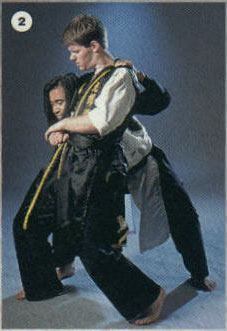
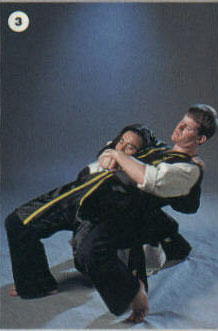
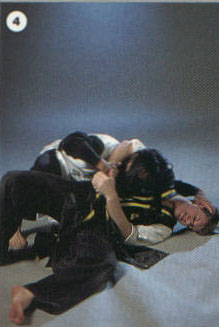
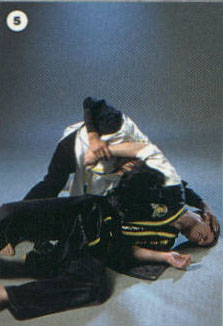

BB: So the system you inherited from Su-Ahm Dosa was not Hwa Rang Do?
Lee: That is right. I inherited the Hwarang combat system, which was called um-yang kwon. Remember, Hwa Rang Do as a martial art name did not exist 2,000 years ago. I founded the name to identify this new martial art in 1960. It is possible that not all the Hwarang generals and rang do disciples practiced the same combat skills. However, before me nobody claimed any Hwarang combat skills, which proves that the only surviving lineage of the Hwarang warriors is from these um-yang combat skills. Others who claim any Hwarang combat skills are [lying], if they arose after me.
BB:What did your um-yang kwon training consist of?
Lee: A typical training session with my master was actually a full-day affair, not at all like the way people train these days. We trained everyday: waking up at 5 a.m.; warming up and training for an hour; making breakfast and serving our master; cleaning up by 8 a.m.; training with our master for three or four hours; cooking and eating lunch; napping for an hour at 1 p.m.; training for another four hours with our master; and then cooking dinner. After cleaning the dinner bowls, Su-Ahm Dosa would teach us shin gong, which are the mental skills, and in sul, which are the healing methods.
BB: When did Su-Ahm Dosa give you and your brother black belts in um-yang kwon?
Lee: The original Hwarang combat skills weren't organized like modern martial arts are. Um-yang kwon was just a continuos process of training without belt ranks. Our training consisted of many different skills. Su-Ahm Dosa taught us how to develop our ability in kicking, punching, jumping, breakfalls, [doing] bone and joint breaks, submission locking, choking, grappling, acrobatic leaping, throwing, pressure point striking and pressing, and ki-training. There were 260 categories with over 4,000 techniques, along with 108 traditional weapons broken down into 20 categories. In addition Su-Ahm Dosa taught us the stealth training used by the ancient Hwarang spies called sul sa. Once we had learned all these skills, we were recognized as masters.
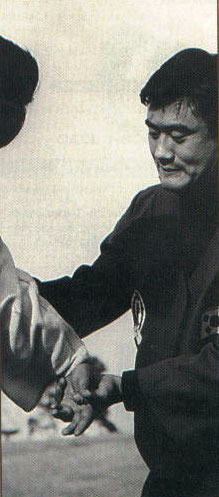 BB:
What happened to your training when the Korean War broke out in 1950?
BB:
What happened to your training when the Korean War broke out in 1950?
Lee: My family and Su-Ahm Dosa relocated to Seoul in 1948. My master made his new home on O-Dae mountain, living in solitude in the Yang Mi Am [hermitage]. Some monks are so engrossed in their own mental and spiritual development that they the rest of the world behind, choosing to live in seclusion where they can continue to develop their skills. My brother and I trained with him daily until our family relocated farther south in 1950.
BB: There is a lot of disagreement about how the post-World War II Korean martial arts came about. It is claimed that many styles were practiced in Korea prior to the Japanese occupation and only resurfaced after the country was liberated. How did the most well-known Korean martial arts - taekwondo and hapkido - come into existence?
Lee: Let's talk about them one at a time. Some taekwondo people say that their art came from a style called su bak, which was the name of the combat skills practiced in the Koryo kingdom. Others claim that it came from tae kyon. Tae kyon is the soft-style civilian foot-fighting skill from the latter part of the Chosun dynasty. Here's the reality: During the Japanese occupation, a lot of Koreans were forced to learn karate-do, which was pronounced in Korea as kong soo do or tang soo do. Some of these Korean karate students became masters, and they founded the seven kwan: Son Byong-in of the yon mu kwan, Hwang Kee of the moo duk kwan, Ro Byoung-jik of the song mu kwan, Um Un-kyu of the chung do kwan, Lee Nam-suk of the chang mu kwan, Lee Jong-woo of the ji do kwan and Choi Hong-hi of the oh do kwan. In 1964, these founders united and brought kon soo do, tang soo do and taekwondo together under the taekwondo banner. Gen. Choi Hong-hi held a great deal o political power at the time, and his federation had a growing membership. Claiming taekwondo as a national martial sport gave the Korean people a martial art to identify with. It capitalized on the post-occupation nationalism.
BB: Were there any other reasons why taekwondo grew so quickly?
Lee: Eventually, President Park Chung-hee took a strong liking to taekwondo, and he established it as the national sport in the early '70s. After that the International Taekwondo Federation (ITF), which was gen. Choi's group, fell out of favor with the new regime and the World Taekwondo Federation (WTF) came to power. It is the WTF that controls the Olympic taekwondo now. In 1968, President Park ordered Ji Han-jae and me to unify all the Korean martial arts. President Park's goal was to make two unique martial organizations: one a martial sport organization and the other a martial art organization. However there were many differences between these martial arts, and the unification effort was unsuccessful. As a result, I left Korea to spread Hwa Rang Do to the United States.
BB: How did hapkido develop in Korea?
Lee: There's controversy only because there are people out there who didn't participate in the growth of the system, yet they go around and act as if they were the ones who invented it. The absolute truth about hapkido is that it began in Korea as a style called dae dong ryu yu sool, which is daito-ryu yawara or daito-ryu jujutsu in Japanese. The term means "great Eastern style soft skills." Choi Yong-sul, the man who is often credited with founding hapkido, was a house servant to one of the last great Japanese combat-skill maters: Takeda Sogaku. Choi was taken to Japan during the occupation and lived there with Takeda until the liberation of Korea. Takeda was the headmaster of the daito-ryu yawara system. It's important for people to understand that yawara is the same as jujutsu in Japanese. The Chinese character are the same, but they can be pronounced two different ways. A judo player named Suh Bok-sup was the first person to "discover" Choi and get him to teach. Suh was hanging out at his father's brewery in a loft. Pig farmers used to take the distilled grains that the brewers were going to throw away and feed them to their pigs. One day a guy came in with a wheelbarrow to get some of this pig feed, and a scuffle ensued with some local troublemakers. Suh heard the commotion and looked down from the loft. He was amazed when he saw the man send the thugs flying and breaking the joints. As soon as the attackers were dropped, the man picked up the wheelbarrow and started walking away. Suh jumped down from the loft and chased after the man to find out what kind of incredible martial art he was using. The man pushing the wheelbarrow was Choi Yong-sul, and he accepted Suh as his first Korean student. In 1953, after the Korean War, Choi opened his first public school and began teaching dae dong ryu yu sool.
BB: So Choi actually taught a Japanese system?
Lee: Absolutely. He made no other claims. Some people today are saying that hapkido is an indigenous Korean system. If Choi had no problem saying he was teaching a Japanese system, why should his descendants? Choi called his art "yu sool" which eans "soft skills." But it's just Korean pronunciation of jujutsu or yawara. He made no secret that he had learned it from a Japanese master. The name"hapkido" is the Korean pronunciation of the Chinese characters that the Japanese use for aikido. At the time we were training with Choi, he only spoke of his art as dae dong ryu yu sool - never anything else. But when aikido was founded, Korea cut off relations with Japan. So when Morehei Uyeshiba, another prominent student of Takeda, came out with his art called aikido, we didn't know about it at first. One of my friends in Taegu named Kang Moon-jin [saw] an aikido text or something [that mentioned] that there was a similar style in Japan using the characters meaning "way of harmonious energy," and he thought it sounded appealing. So he started using the hapkido name for his school in 1959; but six months later, Choi took the signboard off the school and closed it down. Regardless of how it came about, I know that he was the very first to use the term "hapkido" in Korea.
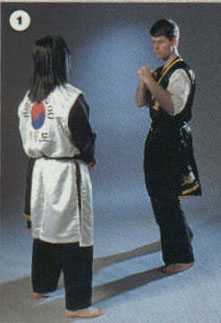
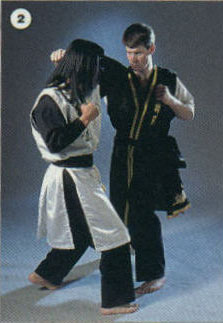
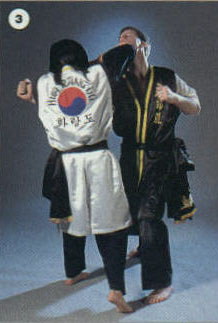
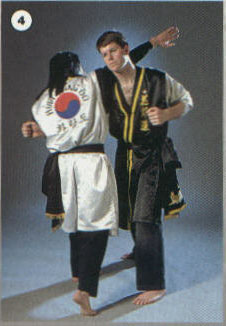
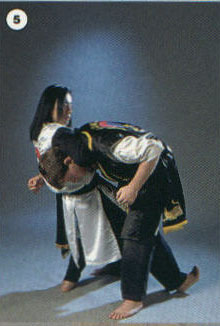
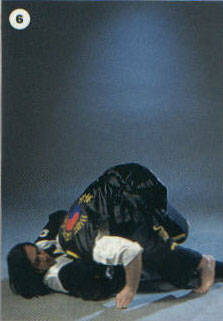
BB: Who else was involved with hapkido in those days?
Lee: In 1959 Ji Han-jae opened his Yawara Dojang and was teaching in Seoul under that name, and in 1960 I was teaching under the Hwarang Mu Sool banner. In 1961 Kim Mu-hong came to Seoul and opened his school under the name Shin Mu Kwon Hapkido. At the time I changed the name of my school to Hwarangdo and Hapkido, and Ji Han-jae switched and founded Sung Mu Kwon Hapkido. So we three masters were the first to use the hapkido name in Seoul as of 1961. In the Winter of 1962, I met Suh In-hyuk while he was visiting Seoul folloing his military service. It was at that time that we [my brother and I, along with five other charter members] created an organization called the Kuk Sool Hoi, which was the short way of saying Han Kuk Mu Sool Hyeop Hoi (Korean Martial Skills Association). The Suh In-hyuk went to Pusan and opened his first school, calling it Kuk Sool Hoi Hapkido. The Kuk Sool Hoi organization that we formed at that time was the first hapkido association in Korea.
BB: So you also trained with Choi Yong-sul?
Lee: Yes. In the 1950s during the Korean War, my family moved farther south to Taegu. I met him there. He taught private lessons; my brother and I took private lessons from him. It's possible that Ji Han-jae and others might have trained at the same time. But we trained at a different time than they did. When we got to Choi's house, it was only the two of us with him. Because my brother and I already had a strong background in the Hwarang martial skills that we learned from Su-Ahm Dosa, the joint locks, grappling techniques and throws of yu sool were easy to pick up. So in 1956, my brother and I received master-level [rank] in yu sool, and our family moved back to Seoul. It is no secret that I trained in yu sool, and anyone who trained in Korea between 1960 and 1968 knew that I was a hapkido founder as well as the Hwa Rang Do founder.
(To be concluded in the November 2000 issue of Black Belt) Click Here to read Part III
Copyright ©1968-2001 World Hwa Rang Do Association